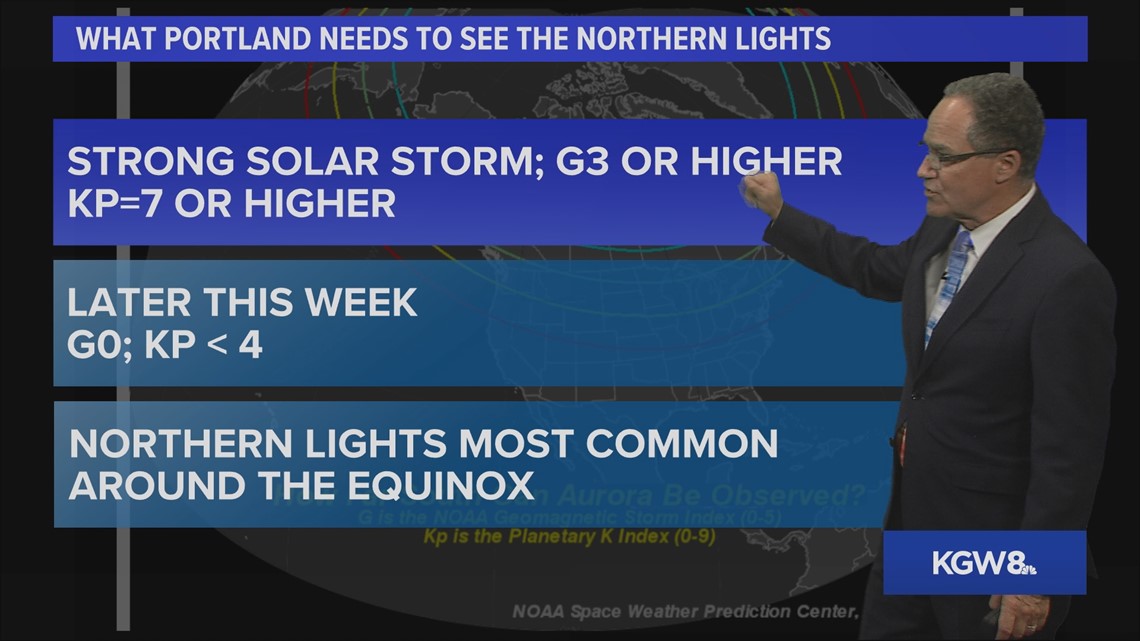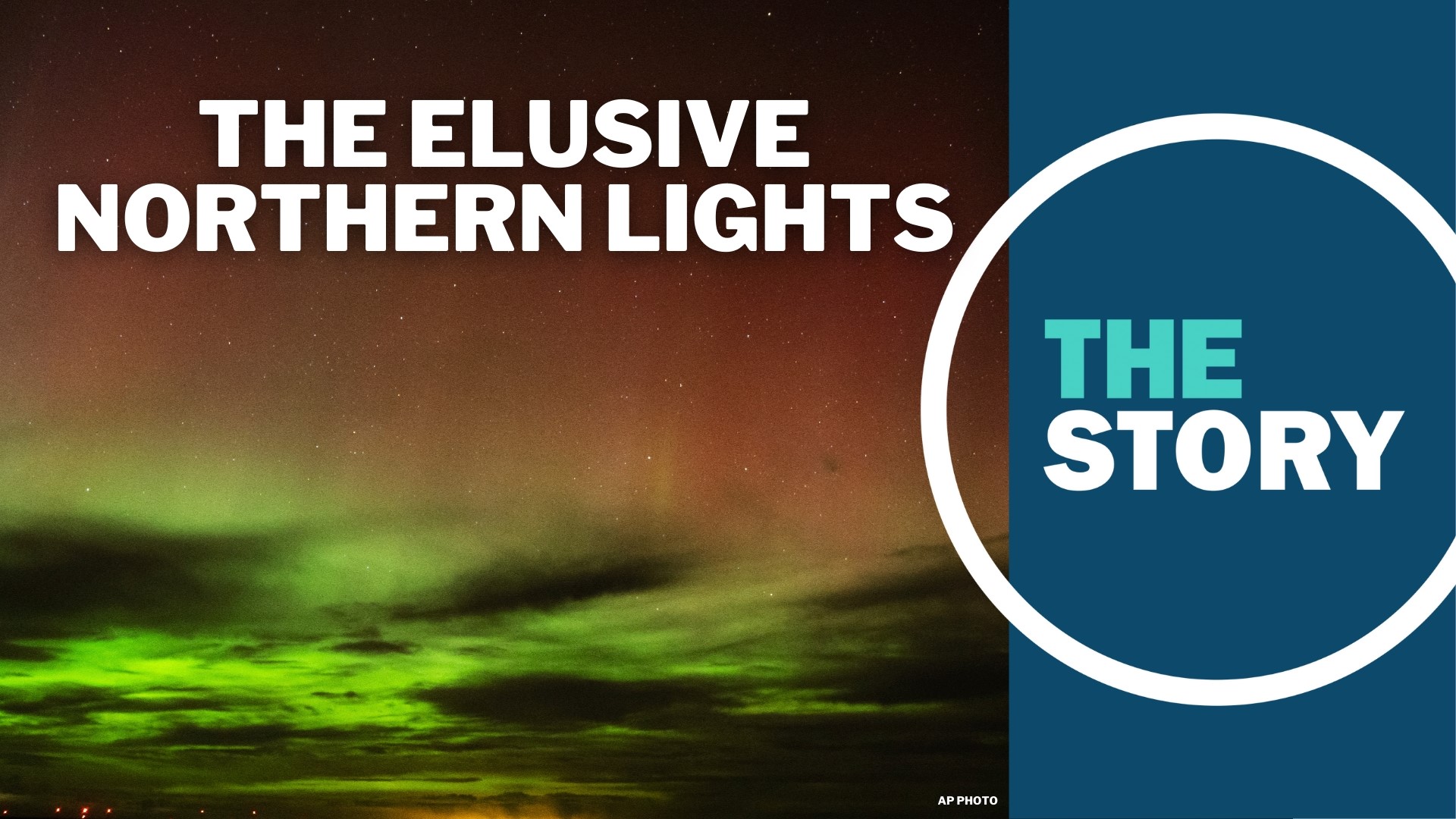PORTLAND, Ore. — Articles have been making the rounds on social media, claiming Oregon and Washington are among over a dozen states that could see the Northern Lights later this week. But it turns out that is likely not the case, according to KGW chief meteorologist Matt Zaffino.
The Geophysical Institute at the University of Alaska at Fairbanks forecasted auroral activity on Thursday in 17 states, including Oregon and Washington.
Zaffino looked into the specifics of what Portland needs in order to see the Northern Lights and found that the conditions will likely come up short.
Also known as the aurora borealis, the green-blue glow of the Northern Lights happens when magnetic solar wind collides with the Earth's magnetic field, causing atoms to glow in the upper atmosphere.
Zaffino acknowledged that the sun has been active recently with solar flares and geomagnetic storms, which are things needed to spark the lights, but the strength of the geomagnetic storm over Portland later this week is likely too weak.
"We need to have a strong solar storm basically, and it's about the strength and then also the timing," Zaffino said. "It has to happen when it's dark on our side of the hemisphere, right? If you get a big, strong solar storm, if it's dark in Europe and daylight here in North America, then you're out of luck. You're not going to see it."
The strength of geomagnetic storms are measured by the "Geomagnetic Storm Scale" and the "Kp-index." Zaffino said the higher the number, the stronger the solar storm. He said Portland is expected to hit zero on the G Scale and less than a four on the Kp-index later this week, according to NASA and NOAA's three-day solar forecast.
"We need about a seven, better an eight or even higher to get a good display of Northern Lights here in Oregon," Zaffino said.
He added that the forecast could still change.


Based on the institute's reporting, KGW initially reported on June 10 that the lights could be visible in the following states: Oregon, Washington, Idaho, Alaska, Indiana, Maryland, Maine, Michigan, Minnesota, Montana, New Hampshire, New York, North Dakota, South Dakota, Wisconsin, Wyoming and Vermont.
Editor's note: A previous version of this story stated that the Northern Lights may be visible in Oregon and Washington, based on reporting from the Geophysical Institute at the University of Alaska at Fairbanks.

